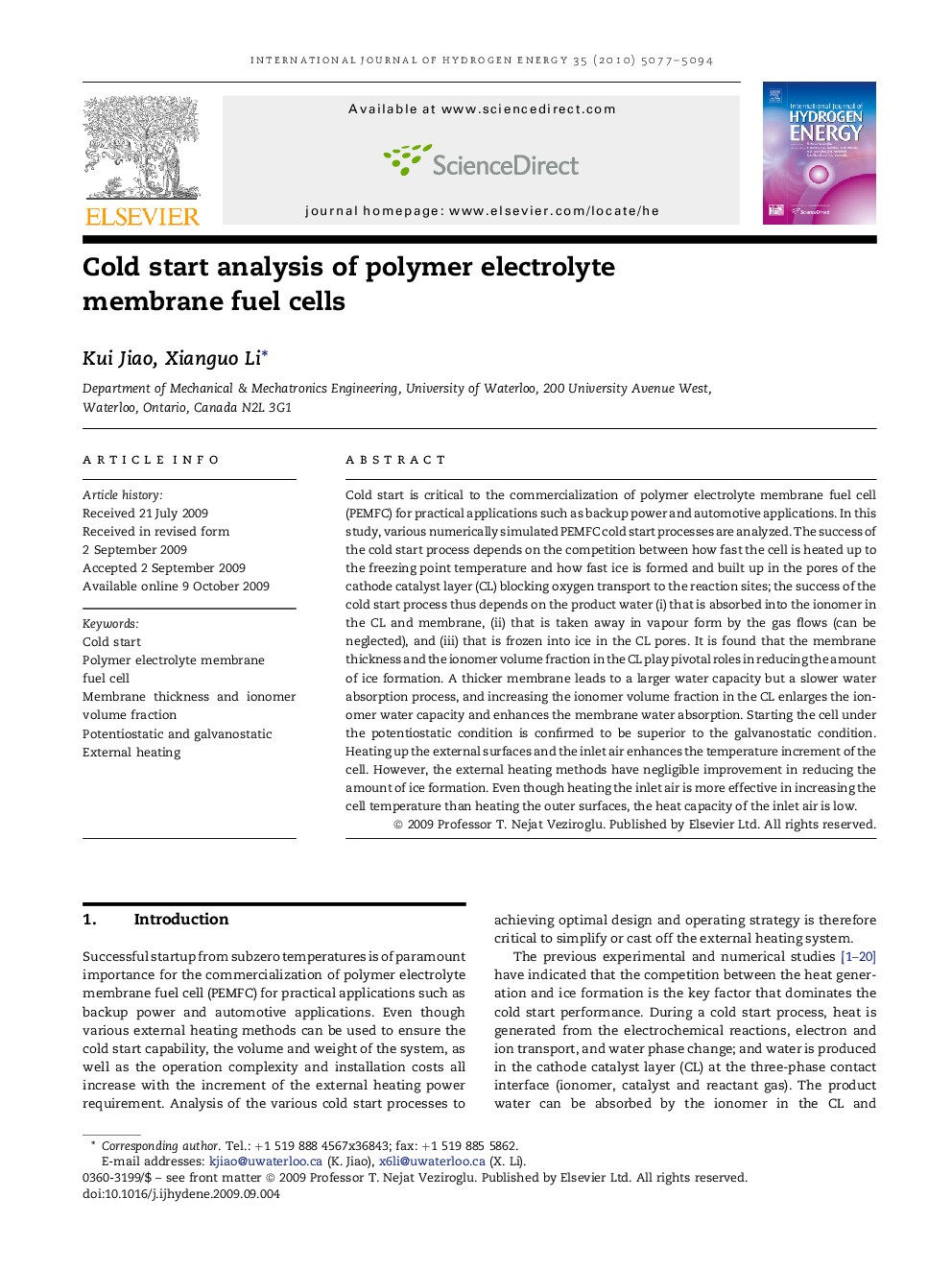| کد مقاله | کد نشریه | سال انتشار | مقاله انگلیسی | نسخه تمام متن |
|---|---|---|---|---|
| 1282856 | 1497607 | 2010 | 18 صفحه PDF | دانلود رایگان |

Cold start is critical to the commercialization of polymer electrolyte membrane fuel cell (PEMFC) for practical applications such as backup power and automotive applications. In this study, various numerically simulated PEMFC cold start processes are analyzed. The success of the cold start process depends on the competition between how fast the cell is heated up to the freezing point temperature and how fast ice is formed and built up in the pores of the cathode catalyst layer (CL) blocking oxygen transport to the reaction sites; the success of the cold start process thus depends on the product water (i) that is absorbed into the ionomer in the CL and membrane, (ii) that is taken away in vapour form by the gas flows (can be neglected), and (iii) that is frozen into ice in the CL pores. It is found that the membrane thickness and the ionomer volume fraction in the CL play pivotal roles in reducing the amount of ice formation. A thicker membrane leads to a larger water capacity but a slower water absorption process, and increasing the ionomer volume fraction in the CL enlarges the ionomer water capacity and enhances the membrane water absorption. Starting the cell under the potentiostatic condition is confirmed to be superior to the galvanostatic condition. Heating up the external surfaces and the inlet air enhances the temperature increment of the cell. However, the external heating methods have negligible improvement in reducing the amount of ice formation. Even though heating the inlet air is more effective in increasing the cell temperature than heating the outer surfaces, the heat capacity of the inlet air is low.
Journal: International Journal of Hydrogen Energy - Volume 35, Issue 10, May 2010, Pages 5077–5094